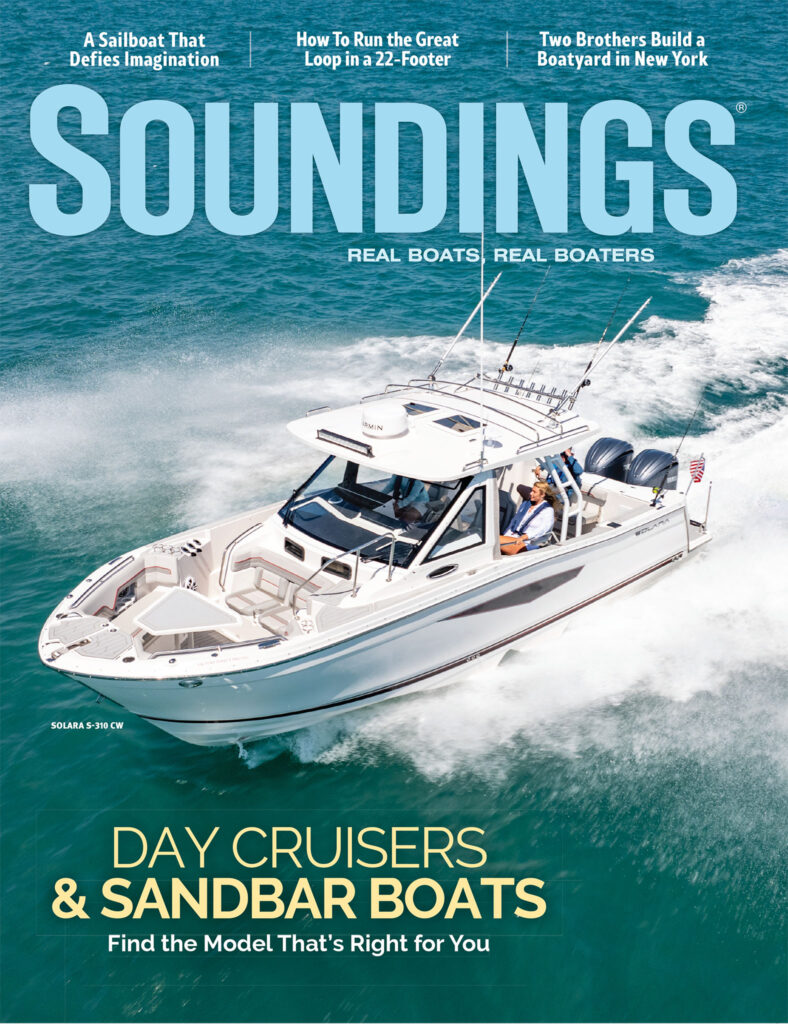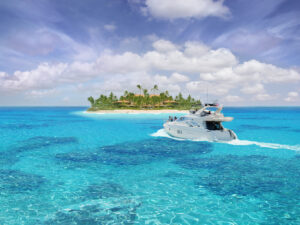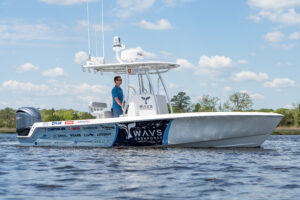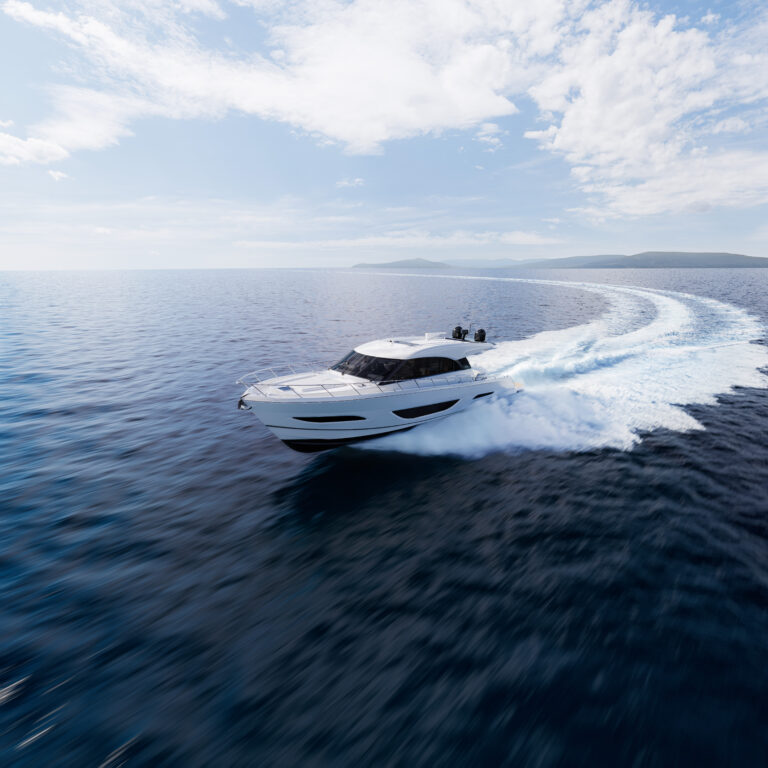Robert Gregg Stone Jr., who handed the America’s Cup to the Australians in 1983, has died at age 83
Robert Gregg Stone Jr., who handed the America’s Cup to the Australians in 1983, has died at age 83
The final race is finished, and the 1983 America’s Cup victor has been decided on the water, not in a courtroom. Australia II, with its secret winged keel, has defeated Liberty by a mere 25 seconds in the final race, ending the New York Yacht Club’s 132-year hold on the gaudy silver trophy. Now what? The darned Cup has to be turned over to its new owners on perhaps the saddest day for sailing in the United States.
“You’ve got these raucous Australians and 2,000 people [spectators] who are kind of nervous how this thing is going to go,” recalls sailing legend and Cup veteran Gary Jobson. But here comes a tall fellow, head and shoulders above most of the sailors, a big smile on his face. “He steps up to the microphone and puts everybody at ease,” Jobson says.
Soon, the man is slapping Australians on the back as they hoist the America’s Cup, and everyone takes the breath they have been holding. Robert Gregg Stone Jr. has turned defeat into a classic show of sportsmanship.
This is but one of the moments that define Stone, the former New York Yacht Club commodore who died April 19 at the age of 83 after suffering a stroke. He was born into wealth and power, yet it was his native talent, say his admirers, that drew people to him. Quiet and thoughtful, he possessed a range of skills that allowed him to shape the world as he thought it should be.
While the foremost memories among those who knew Stone best are of his personality, his public achievements also define him. A World War II veteran and 1947 graduate of Harvard University, he co-chaired that school’s University Campaign, which raised a record $2.6 billion. He also served for 27 years on the board of the Harvard Corp., which runs the institution. Stone was president and chairman of States Marine Lines and chairman of the Kirby Corp. Moreover, he was a member of countless influential corporate and charitable boards, including Mystic (Conn.) Seaport. And he was commodore of the New York Yacht Club from 1981 through 1983.
“Face it, he was the commodore who presided over losing the Cup,” says Charles Dana, a subsequent commodore and close friend of Stone’s. “Maybe the New York Yacht Club fell asleep at the switch that summer. He could have been tarred and feathered with that, but he never was.” (Dana, along with Jobson, was chosen to eulogize Stone at the club’s May 14 commissioning ceremony.)
A reason Stone’s reputation survived the Cup loss was his powerful leadership. During the 1983 Cup campaign, there were forces within the club that wanted to take the Australians to court over their radical design, but Stone opposed them. “Stone said: ‘Let’s go out and sail for it,’ ” Dana says. The lawyers were dismissed, and Dennis Conner came within seconds of defeating the superior Australia II.
At a May 4 memorial service at Harvard, Stone’s son, Gregg Stone, said one of his proudest memories of his father is the way he handled the exchange of the Cup.
“The themes of his life were people, sailing, Harvard and his family,” says Gregg Stone. “They were intertwined. He was active in sailing from the get-go. At the age of 4 he was hanging around the deck of his aunt’s yacht, Arcadia, a 240-foot steamship.”
When Stone was 11, his mother chartered a sailboat and hired a schoolteacher, sending her son and his friends on a summer-long cruise along the Maine coast, says Gregg Stone. “They turned around in Campobello Island, where they cooked hot dogs with FDR.” The elder Stone was hooked for life on sailing.
Stone dropped out of Harvard to serve in the army in the Pacific theater, then returned to finish college, where he was captain on the heavyweight crew that set a world rowing record in 1947. He married Marion Rockefeller when he was 25, and they raised four daughters and two sons in their homes in Greenwich, Conn., and Marion, Mass.
When his children were young, Stone bought one of Aage Nielsen’s designs, a 50-foot centerboard yawl that he named Sayonara. “That started my father racing,” Gregg Stone says. “As kids, we sailed with him a lot. As a skipper, he was extremely quiet, never yelled — occasionally might say something strong to his son because he expected more.”
Indeed, Stone expected more from everyone close to him, according to Dana. “I used to watch people come into his life and wonder if they’d make the grade,” he says. “He could spot a phony a mile away. And he wasn’t impressed with somebody who was impressive in their material goods. That didn’t weigh much with Bob.”
Dana tells of a time following the ’83 Cup when a group of NYYC officers were discussing the possibility of allowing a certain billionaire to fly the club’s burgee in an upcoming America’s Cup challenge. The others were approaching the topic gingerly, politely. Finally, Stone spoke up: “Jesus, guys, let’s face it. He’s a horse’s ass.”
“Whenever someone got an idea, it was always: Who’s going to call Bob,” Dana says. “He cast a big shadow [with] both his stamp of approval and his advice or mentoring that would come with it. If Bob Stone wanted something to go on or didn’t, it would succeed or fail. He would do everything in his power to get input from people. He would constantly be asking people, ‘What do you think about this situation?’ He would take it all in. Eventually he would have an opinion.” And the others would follow.
Dana says Stone deplored small talk unless it was “connected with humor.” Prattle would render him almost comatose, Dana recalls. “He could see four moves ahead of other people,” he says. “But he could really tune out.
“He had a certain humbleness to him. He didn’t toot his own horn much,” says Dana. “[But] you always knew he was in the room. And the room didn’t feel quite right if he had to leave a room early. And I’m talking about any kind of a room — a social setting, a board-type meeting.”
Stone — whose mere stature at 6 feet, 5 inches was noticeable — was like a magnet, says Dana. “Even if he was raising money and you would see him in a room, people would be going toward him” instead of running away to avoid being solicited, he says. He was an extraordinary fund-raiser for the causes in which he believed, particularly for Harvard University.
“Bob was Mr. Harvard,” William H. Boardman Jr., associate vice president for capital giving, says in a university press release. “No other alumnus or individual connected with Harvard ever raised more money on behalf of the university, and he was respected immensely because of the extraordinary example he set for others.”
In the same release, president emeritus Neil L. Rudenstine says, “[Stone was a] person of great warmth and affection, with a powerful, intuitive mind that quickly grasped the complexities of virtually any situation. He was also enormously generous in spirit and had a natural openness and magnetism that quickly drew others to him, usually to work energetically on Harvard’s behalf.”
Dana relates Stone’s technique in soliciting a contribution from one wealthy man. “One time he was riding next to a guy six hours [in] first class going to Europe. It was someone like the Aga Khan,” he says. Stone pitched his cause for the entire flight but hadn’t yet succeeded when the plane landed. “Stone just blocked the way,” says Dana. Preventing his subject from leaving his seat, “You haven’t made a commitment yet,” he told the man.
“One time, he was after me making a commitment. I said, ‘My wife and I are thinking about it.’ He shook his finger in my face and said, ‘You’d better think harder,’ and I donated to it,” Dana says.
“I think Bob Stone was most at peace when he was cruising in Maine, which he did every summer,” says Jobson. Stone’s most recent boat was Arcadia, a 69-foot McCurdy & Rhodes-designed aluminum yacht.
“He loved cruising, yet he was quite skilled on the race course,” says Dana. “He was always in the arena. He had a very loyal crew over the years. He’d never think about turning them over. He’d go out with aging sails and crew and always do creditable. If there was a problem with his captain, he’d re-educate the captain, rather than fire the captain.” It was a matter of communications, and his friends saw this as another of Stone’s defining qualities.
On a lay day during the annual NYYC cruise, Stone would commandeer someone’s boat and use it as a harbor launch, going from one member’s boat to the next, shanghaiing people — as many as would fit aboard the boat — and handing them a rum drink. One year in Maine, a jaw-droppingly beautiful yacht named Jessica, owned by a wealthy Spaniard, was anchored in the harbor, Dana recalls. When Stone had a boatload of rum-drinking friends, including Dana, he steered toward Jessica and pulled alongside.
“He was brought up with manners,” Dana says, so when the yacht’s skipper came to the rail, Stone politely explained that he and his friends admired Jessica and would like to see her.
“The next thing you know, the owner is on deck sort of looking at us all,” says Dana. “Stone handles himself just right to get us on board. And then the guy is really proud of his boat and we felt like honored guests.”
Dana says Stone knew how to converse with the “high and mighty” as well as the person on the street. “He always knew the staff names at the New York Yacht Club. ‘How’s your wife?’ ‘How’s your cousin?’ He always went into the kitchen.” Sometimes, he might not know a person’s name, Dana says. “If you were a friend of his, he would pull your lapel and whisper, ‘Who’s that guy over there?’ ” And then he would greet the person by name.
More than any other quality, Stone was a people person. “He was a good judge of people and depended on that in whatever he did,” says Dana. “He thought people overcomplicated things. He talked about how you judge people rather than looking at the figures of a business deal.
“It gets down to the people,” Dana recalls Stone saying. “If the people aren’t right, it doesn’t matter how good the figures are.”










